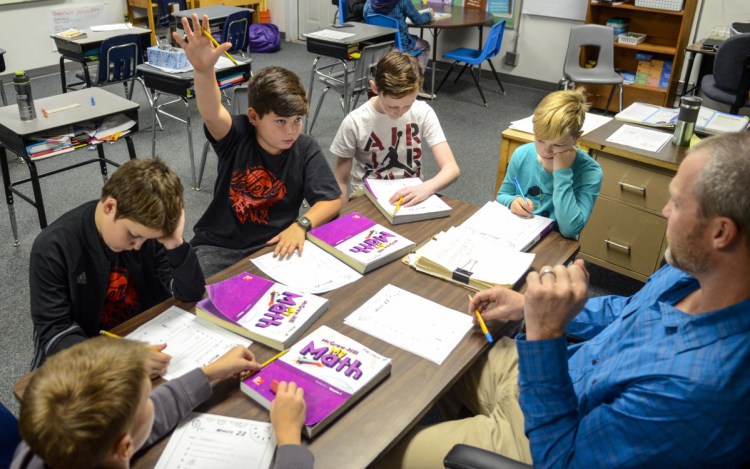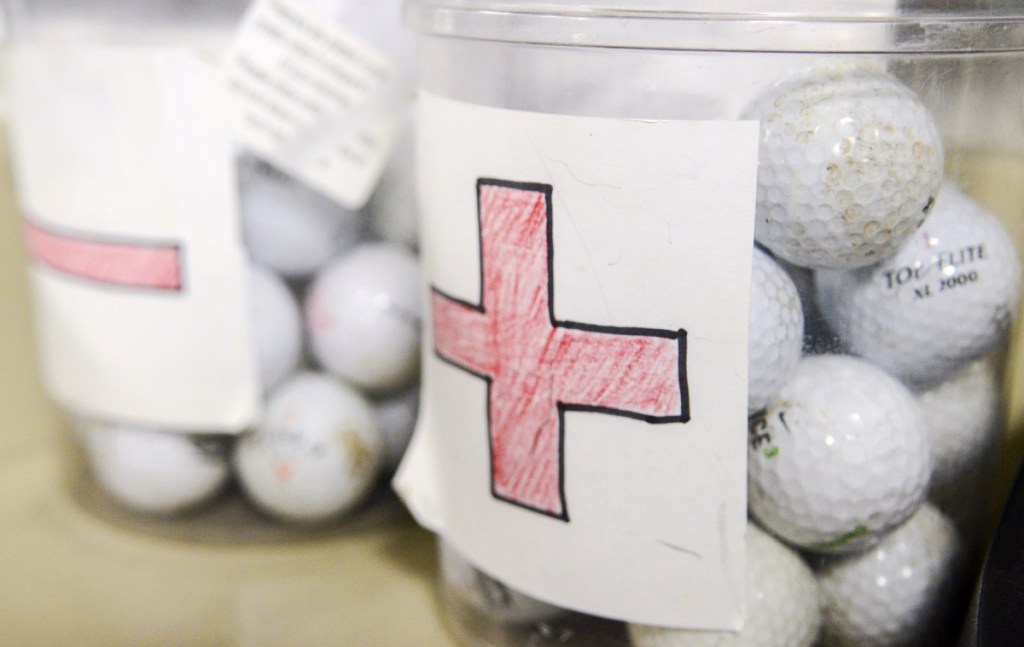PALERMO — Early this school year, Principal Stephanie Oliphant had a decision to make about a student who wasn’t behaving well.
The girl kept standing up on the bus ride to Palermo Consolidated School, creating “a major safety problem,” Oliphant said.
To handle the situation, the principal could have meted out a punishment, revoking the student’s right to ride the bus. Instead, she offered the student another option.
First, principal and child watched a video on bus safety and talked about it. Then they agreed to a system: If the student started behaving well, the bus driver would report that to the principal. In turn, Oliphant would reward the student by inviting her to come play games in the office.
“She’s changed that behavior already,” Oliphant said. “Even though I could have taken her off the bus, my choice was to spend time with her, really coaching, ‘What are some things you could do, such as reading a book?’ Such as, ‘How do you talk with a friend?’ Things like that.”
Over the last few years, it’s become increasingly common for the Palermo school faculty to offer students similar choices, of the carrot over the stick.
Like other schools in the Sheepscot Valley school district, Regional School Unit 12, the Palermo school has been implementing a set of educational guidelines first developed two decades ago by researchers at the University of Oregon. The guidelines, known as Positive Behavioral Interventions & Supports, emphasize the importance of data and the need for students with behavioral disorders to be instructed explicitly on social skills.
They first were supported by the federal government in 1997. Since then, experts say, the guidelines have become an effective tool for schools that are trying to help students succeed in class while developing other skills.
At a time when families and educators are more focused than ever on threats such as substance abuse, bullying and shootings, proponents also say the approach can help address troubling behavior before children get to the point of harming themselves or others.
At Palermo Consolidated School, the staff has been incorporating the positive behavior guidelines for about five years. As part of them, teachers strive to provide five times more positive than negative feedback to their students, based on a ratio that’s been associated with happiness in relationships.
“It’s not just a good idea; it’s based on research,” said Courtney Angelosante, a special education lecturer at the University of Maine who helps schools implement the guidelines. “The higher that ratio, the higher the feelings of safety. It’s not about phony instances of praise, but talking about ‘You’re acting in line with what we value here.’ That’s an important way for us to build a community of safety and respect.”
Staff members also try to set clear guidelines for how students should behave and, when students meet those guidelines, reward them with tokens that can be cashed in for prizes, such as pizza parties and play time.
Some of the tokens, in keeping with the school’s mascot, resemble the paws of panthers. Fifth-grade teacher Adam Hamel has a system of dumping golf balls — called “power balls” — into a bucket to show that students have met expectations.
When staff members do correct misbehavior, they try to frame it in a positive way. If a student was running through the hall, for example, they wouldn’t tell him or her running is bad; they’d explain why walking is better. For students who demonstrate more serious behavior problems, the staff provides a variety of interventions to coach them on the correct way of doing things.
What distinguishes the positive behavior approach, staff members say, is that they’re required to keep meticulous data on any misbehavior by students in specially designed software. Whenever children are referred to the office for discipline, they report the infraction in a tracking system, identifying what happened, where it happened, what actions were taken and other criteria.
That way, the staff can follow students as both individuals and a group and answer a variety of questions, such as what approaches are working or which areas of the school are more conducive to bad behavior.
So far, the results at the Palermo school have shown promise. During the 2015-2016 and 2016-2017 school years, data showed that almost 40 percent of students were referred to the office more than once per year. But that rate dropped by half last year, to almost 20 percent.
Oliphant, the principal, said she has noticed the improved behavior in her regular observations of students, and she attributes it to the guidelines.
“When you are praised for something, or rewarded for something that you’re doing, you’re more motivated to keep doing the right thing or to work toward that goal,” she said. “It allows everybody to be more respectful, so you’re less likely to have conflict and you’re less likely to have people getting angry.
“It’s almost like you’re catching things before it’s happening,” Oliphant added. “We’re trying to be proactive as opposed to reactive.”
More than 7,000 schools across the country have adopted some form of the PBIS guidelines, including more than 42 in Maine. In early 2018, the University of Maine College of Education and Human Development received a $246,000 grant to help districts implement them.
Given the body of research that shows PBIS helps reduce rates of bullying and bad behavior, proponents also say that it makes schools safer by helping staff target problems before they escalate.
The advantages of such an approach were highlighted last spring, after the mass shooting at Marjory Stoneman Douglas High School in Parkland, Florida.
After the shooting, a group of academics drafted a public health action plan for reducing gun violence that has since been signed by hundreds of universities, departments and individual experts — including the College of Education and Human Development at the University of Maine.
The action plan proposes, among a total of eight measures, that schools reform their disciplinary process to foster positive change in students’ behavior and academic performance.
Jim Artesani, an associate dean at the University of Maine College of Education and Human Development, said the proactive approach of PBIS can help advance that goal of preventing violence in schools, rather than reacting when it’s too late.
“There is closer attention to students who are exhibiting various types of need, and the likelihood of a student not having their needs addressed is reduced,” he said. “In some school shootings, people say, ‘We had no idea this person would do this,’ but there’s a long distance between seeing someone who is displaying some things you’d be concerned about, and then jumping to, ‘This person would bring guns to school and shoot people.’ There needs to be a way to address the needs of kids long before it gets to that.”
Send questions/comments to the editors.





Comments are no longer available on this story